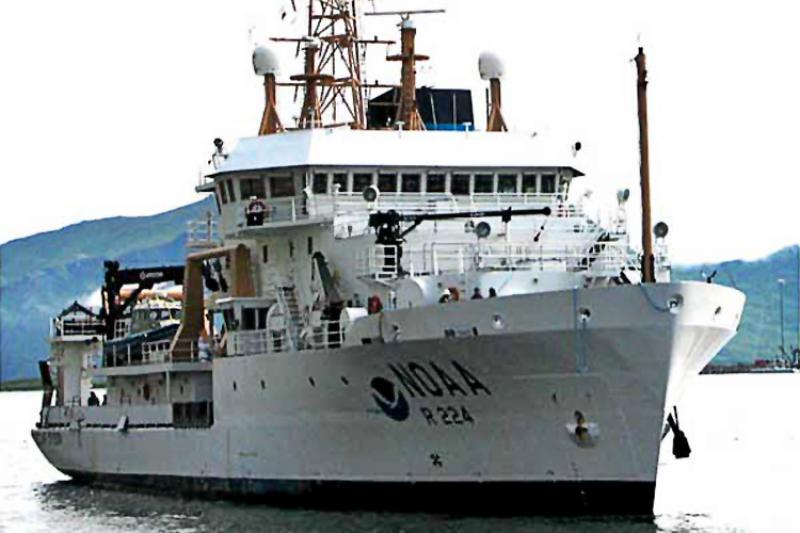Eastern Bering Sea walleye pollock (Theragra chalcogramma) support one of the world’s largest fisheries. Due to this species’ high recruitment variability and relatively short life span (approximately 15–17 years), timely and accurate abundance indices are needed for the proper management of this valuable stock. Information that is critical for the estimation of walleye pollock population dynamics and stock size traditionally comes from the National Marine Fisheries Service (NMFS) biennial acoustic trawl (AT) survey and annual bot tom trawl (BT) survey conducted by scientists from the Alaska Fisheries Science Center’s Resource Assessment and Conservation Engineering (RACE) Division. The annual BT survey tracks the older, demersal portion of the population and uses chartered commercial fishing vessels, whereas the biennial AT survey tracks the younger, midwater portion and uses NOAA research vessels.
In order to provide more frequent assessment information on the walleye pollock midwater component at a relatively modest cost, scientists with the RACE Division’s Midwater Assessment and Conservation Engineering program initiated a project in 2005 to investigate the feasibility of collecting annual acoustic backscatter data from the BT survey charter vessels. The objective of the project was to determine whether an abundance index for the midwater component could be developed to augment the biennial AT survey estimate. Many challenges were faced as the BT survey is not designed or executed as a formal AT survey. For example, it was not possible to directly sample the midwater acoustic backscatter for species classification or run a dedicated AT survey trackline pattern. Nevertheless, since walleye pollock comprise a large proportion of midwater backscatter in the eastern Bering Sea (EBS), and the AT and BT surveys largely overlap temporally and spatially, the project was considered to have a reasonable likelihood of success. The resulting acoustics-based BT survey index, based on several years of data, demonstrates that it is possible for the BT survey to provide critical information on the midwater component of the pollock population, which would be otherwise unavailable during the AT survey off-years.

